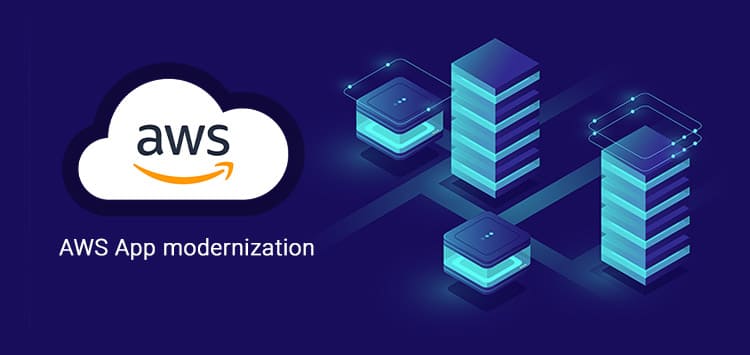Application Modernization with AWS: Key points every CIO must consider

The world of information technology has always been about innovation and agility. This makes the work of CIO ever more challenging, as they try to keep up with ever-changing markets with varying customer expectations.
However, the current IT infrastructures are still struggling to cope up with legacy IT systems. According to the study done by McKinsey, legacy systems in an Enterprise setting require 74% of the budget. This drags innovation as companies cannot have the budget or time to spend on innovative technologies.
This can be changed with the application modernization and hybrid cloud adoption.
In this article, we will look at points that the CIO must consider when applying modernization using AWS platform.
Factors that drive Application Modernization>
Multiple factors drive application modernization. As legacy systems get old, they lack the scalability. Apart from that, they are not optimal and efficient in every possible way. With growing business and demand, you will find them to have performance issues.
Legacy solutions are also prone to security problems, as it is hard to patch them for newer vulnerabilities. In comparison, new modern solutions are more patch friendly, as they have new architecture.
With time, it is also hard for companies to find the necessary talent to manage their legacy systems. Lastly, managing infrastructure also becomes costly.
Why Choose AWS for Modernization?
AWS is one of the leading cloud service providers which offers excellent services for modernization. The key benefits of choosing AWS include
- Better licensing terms with no lock-ins
- Complete control of modernization approach
- Better performance with lower cost
- Improved flexibility through open source
Key points that CIO must consider using AWS for Application Modernization
As a CIO, you must know some key points before you do application modernization using AWS with the help of in-house team or you can get help from partners that offer a wide range of AWS development services.
Learn about your Business
The first step is to understand your business, including its complexities and efficiencies. To do so, you need to understand the users and core applications. After which, your focus should be on understanding the application lifecycle.
Once done, you need to do application rationalization using Forrester Wave Methodology or the Gartner TIME Model. By doing so, you can understand the points where changes or improvements are needed.
Business service orientation and decoupling applications
You can also take business service orientation where the Enterprise IT is analysed for needs. This gives CIOs a clear roadmap on how to approach modernization.
CIOs should also be wary of the legacy systems. To ensure proper modernization, CIOs need to devise a plan to decouple applications to run on their own.
Follow proper Modernization process
The modernization process lets you carefully carry out the modernization. It starts with the platform design where you plan the software delivery environment. Apart from that, it would be best if you focus on improving the performance in the design phase itself. To measure progress, you can focus on three key categories:
- Speed
- Stability
- Reliability
Next, you should build your platform by moving the low-priority process to the cloud-first. Other factors that you should consider while migrating include the usage, risk, and urgency of need. The key here is not to hamper the legacy system performance while doing migrations. It’s just that you need to ensure proper platform usage by using the low-risk services first, followed by higher-risk services.
Conclusion
Application modernization should be at the core of Enterprises that want to focus on growth and adoption. So, what do you think about the points?